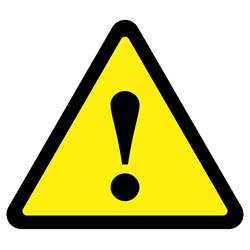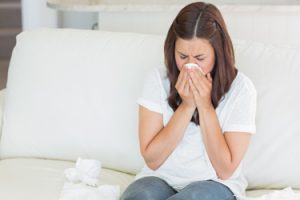
by Eric Brown | Oct 1, 2015 | Bleach and Mold, Health, Indoor Air Quality, Killing Mold, Mold Facts, Mold Information, Mold Remediation, Mold Removal, Questions and Answers
YES, Dead Mold Spores Are Harmful!

YES, Dead Mold Spores Are Harmful!
“Dead mold spores are just as harmful as live spores.” (Johnny Wells, Mold B Gone)
One of the problems with the mold remediation industry is the lack of regulation. Because of this, there are many contractors that believe they can offer mold removal services without the proper training or experience.
This is particularly true when you encounter mold removal contractors that recommend that mold can be simply killed. The problem with this approach is that it is not a permanent solution to a mold problem. In short, there is no “quick fix” for mold contamination situations. As a consumer, you need to be cautious about hiring contractors that offer magical solutions that involve just spraying a chemical to kill the mold dead.
As stated by Michael Pinto, CEO of Wonder Makers Environmental:
“Killing mold, but leaving the residue in place, is not acceptable. Since many health impacts can be triggered by exposure to both live and dead mold spores, the source and secondary contamination must be removed.” (MOLD INDOORS: Killing it is Not Enough)
Mold 101: The Basics
- Mold thrives when moisture is present. Removing mold without addressing the cause of the problem, ie. identifying the moisture source is not a long term solution. Before any mold removal, the moisture problem must first be found and fixed.
- Exposure to mold spores, both live and dead, and their byproducts like microbial volatile organic compounds (MVOCs), mycotoxins, connecting filaments, etc. can cause illnesses ranging from minor allergic reactions, respiratory problems like asthma and sinusitis, to more serious, life threatening illnesses.
- With respect to health, every individual responds to mold differently. Some people get sick, others don’t. A little bit of mold can make some residents of a property sick, but will not have an impact on others. Research has shown that 25% of the population have a genetic predisposition to mold illness and the condition known as Chronic Inflammatory Response Syndrome (CIRS).
- Mold is a biological agent that will continue to grow as long as the right conditions exist. This is the reason that mold is such a concern because it will continue to thrive and grow unless it is removed and the underlying moisture cause is fixed. In short, ignoring a mold problem will make the situation worse and pose more dangers.
- Contractors trained in mold removal, refer to the process as “remediation” because they have invested in specialized training and equipment and take precautions to prevent the spread of the mold in other parts of the building. Mold remediation specialists will never recommend a “quick fix” because they understand that relying on mold sprays, bleach, biocides, and fungicides are an ineffective “short cut” to mold removal.
The Bleach Myth!
“Perhaps the most misunderstood aspect of bleach when proposed as a cleaner or sanitizing agent is that its effectiveness is greatly reduced in the presence of organic material. To be a successful sanitizer, bleach must be used on clean materials and surfaces. This is why bleach products are used in the laundry after the wash cycle or in a commercial kitchen as a component in the third sink after the dishes have been washed and rinsed. The efficacy of bleach as a sanitizer is also compromised by heat and light. Despite the fact that the chlorine odor may linger for some time after use, bleach loses strength so quickly that it is not considered to have a residual effect that would prevent future bacterial or fungal growth.” (Michael Pinto, Why Restoration Professionals Should Avoid Using Bleach)
One of the benefits of the Internet is it allows anyone to search for a topic of interest and find the information they are looking for.
Unfortunately, with respect to mold removal, the bleach myth is perpetuated on the Internet on countless websites.
Bleach may have some impact on non-porous materials, like bathroom tiles, but bleach is completely ineffective on porous materials:
“If you spray bleach all over your “black toxic mold” you won’t kill every single spore….To kill every single mold spore using bleach, for example, you’d have to use such a high concentration of disinfectant and you’d have to keep it on the surface for so long that more likely you’d damage the structure – and still miss some toxic spores.” (How to Kill Mold – Do We Want to? Is Dead Mold Dangerous?)
Other reasons we do not recommend the use of bleach:
- Bleach does not address the cause of the mold problem!
- Bleach is dangerous!
- Bleach evaporates!
Bleach Does Not Address The Cause Of The Mold Problem!
Experienced mold removal specialists understand that the most effective way to deal with mold is to first find the moisture source and make sure it is fixed.
The next step is to remove the mold contaminated porous materials.
Proper removal of mold contaminated materials like drywall, carpet, soft goods, insulation, and other porous materials is essential because mold has hyphae, which are basically roots that embed themselves in the material.
This is the reason that bleach does not work. Bleach may kill some of the surface mold, but it will not be able to penetrate and kill the roots.
The other reason bleach is a problem is that it is diluted with water. Spraying this is counter-productive because water is an essential ingredient mold needs to grow.
Keep in mind, even if another biocide or fungicide is sprayed on the material, killing the roots, the material will still be contaminated with dead spores. The best course of action to permanently deal with a mold problem on porous materials is to properly dispose of the contaminated material.
Bleach Is Dangerous!
When you are using bleach you should always wear gloves, goggles, and a respirator for three key reasons.
- Bleach is a corrosive that could irritate and damage your skin.
- During the spraying and evaporation process, bleach releases chlorine gas that will impact the eyes and respiratory system.
- One of the by-products of chlorine bleach are dioxins, linked to cancer.
If you intend to use bleach for household cleaning projects, never mix it with other cleaning solutions or detergents that contain ammonia because toxic fumes will be produced.
Bleach Evaporates!
The core ingredient of bleach is chlorine. Over time, chlorine can evaporate and escape through the plastic container. In short, the longer bleach sits, the more ineffective it will become because the chlorine dissipates.
Final Thoughts: Killing Mold Is Not The Answer!
“Even if in theory we could “kill” every spore, the assumption that they are unimportant is highly questionable. “Dead” spores often contain allergens or toxins that are just as harmful to someone breathing them or getting such mold in one’s eye or in a cut, as before….The object is not to “kill” mold, it is – to remove the mold reservoir in the building by physical cleaning or in cases of items that can’t be cleaned, such as drywall, soft goods, carpets, furniture, or insulation, remove the moldy material – to identify the cause and make sure that’s been corrected.” (How to Kill Mold – Do We Want to? Is Dead Mold Dangerous?)
The core reason Mold B Gone offers a 5 year or a 25 year guarantee on our mold remediation services: we understand that killing mold is not a long term solution to your mold problem.
We also understand that chemicals, like bleach, will not work because of our training and experience.
Because of our mechanical engineering background, we know how to inspect the structural integrity of your home or business while performing inspections or remediation.
We know where to look for mold and most importantly how to prevent future mold from recurring because we understand that the core cause of mold is moisture.
We are able to offer such a substantial guarantee on our services because our founder, Johnny Wells, has a chemical engineering background. This education has led to the formation of a successful chemical company, Citri Fresh, that uses all natural ingredients to prevent future mold growth using products such as Mold Zap, Mold Shield, and Mold-B-Gone.
If you have a mold problem, contact Mold B Gone. We are experts at IAQ testing, identifying the moisture source causing the mold, removing the mold, and most importantly, preventing future mold growth using our proprietary chemical line.
Questions? Call 678-697-6267, send us an e-mail, or contact us on FaceBook! We look forward to serving you. 🙂

by Eric Brown | Sep 11, 2015 | Health, Indoor Air Quality, Mold Facts, Mold Information, Mold Remediation, Mold Removal, Questions and Answers, Water Damage Restoration
Beware Of These Top Three Flooding Health Hazards!

Beware Of These Top Three Flooding Health Hazards!
Our previous articles outlined the top three facts about water damage restoration and three steps to reduce flood damage. The purpose of this article is explain the top 3 health hazards created by water damage.
The primary goal of water damage restoration is to help you get back to your normal routine by restoring your property to its pre-flood condition.
The secondary goal of restoration professionals it to minimize these three water damage health hazards:
1. Mold Growth
2. Bacteria Growth
3. Structural Damage
Hazard #1: Mold Growth
Where there is moisture, there will be mold. Unfortunately, if you experience water damage from a flood, the issue of mold is a bigger concern because there is so much moisture to promote mold growth. Mold is a problem because it can cause illness and this is the primary reason you want to prevent mold from growing.
Research done by Dr. Harriet Ammann, a mycotoxin expert, shows that mold exposure can damage the bodies systems:
- Vascular: blood vessel fragility, hemorrhage from tissues or lungs
- Digestive: diarrhea, vomiting, hemorrhage, liver damage, fibrosis and necrosis
- Respiratory: trouble breathing, bleeding from lungs
- Neurological: tremors, loss of coordination, headaches, depression, multiple sclerosis
- Skin: rashes, burning, sloughing, photosensitivity
- Reproductive: infertility, changes in reproductive cycles
- Immune: Immunosuppression
Interviews with mold survivors shows that chronic mold exposure can lead to mycotoxicosis. The negative impact of mold on the health is growing and has been well documented most recently in articles written by the CEO of Wonder Makers Environmental, Michael Pinto in three key articles:
1. Medical Evidence that Connects Mold Exposure to Illness Keeps Piling Up
2. The Answer to the Mold Illness Questions Is: All of the Above
3. Do People Really Get Sick From a Little Mold in Their House?
One of the keys to preventing mold growth is to ensure that the water damaged area is completely dry before any reconstruction occurs. Unfortunately, this does not occur all the time, particularly when you hire inexperienced restoration contractors. To avoid this from happening, be sure that you pre-qualify your contractor and do your due diligence, review this article to learn more about the pre-qualifying process.
Hazard #2: Bacteria Growth
As explained in a previous article, one of the main priorities of a restoration contractor is to determine the category hazard of the water, ie. is it category 1, 2, or 3. This is very important because the worse type of water is black water which can cause some serious health conditions: gastroenteritis; Weil’s disease also known as Leptospirosis; Hepatitis; acute respiratory illnesses; and tetanus.
The number one rule about water damage is the longer you wait, the worse it will get. This is particularly true when you are trying to prevent hazardous bacteria from growing because category 1 water can turn into category 2 water and eventually category 3 water, which is the most toxic and causes many illnesses.
Hazard #3: Structural Damage
Water damage can impact the structural integrity of a property because large amounts of water can degrade the strength of the materials.
This is particularly true when mold begins to grow because mold feeds on the material and will continue to feed until it has finished consuming the material. This is the reason wood will rot when mold contaminates it.
As the wood is consumed and begins to rot, this will negatively impact the structural integrity of the home creating a health hazard, not to mention rotting wood will reduce the value of the property as well.
How Do I Protect My Family and Property If My Home Is Flooded?
Hiring an experienced professional is the most important step to protecting the health and well-being of your family. Experienced restoration professionals, like Mold B Gone, will not advise you to rush into the reconstruction phase of your restoration project because they understand that the key to preventing mold is to ensure that the flood affected area is completely dry.
Reconstruction after restoration is essential to restoring the daily routine of your life. However, if the property is reconstructed and moisture is still present, this will create long term headaches and costs because mold will grow. To avoid mold growth, patience is the key to allow the area to dry completely.
You will know that reconstruction has occurred to soon if you begin to have condensation on your windows; smell musty odors; and find other clues that moisture is present including water stains, new or increased allergy symptoms, cracked or peeling paint, loose drywall tape or wall paper, rusty metal, and drawers or doors that stick.
If you do have a mold problem, then please avoid fly-by-night mold removal contractors that lack experience and credentials. They may present you with cheaper mold removal estimates, particularly if they tell you they can remediate your mold with ozone, do all the clean up with bleach, or simply run a machine that fogs and kills the mold.
To avoid the pitfalls of hiring fly-by-night operators who do not offer a guarantee and lack experience, hire a professional like Mold B Gone that has years of experience, specialized training, equipment, and a solid reputation in the community. Experienced contractors will provide you with a recovery plan of action that outlines what will be done to address the water damage and prevent mold growth. The plan will outline the following for you:
- An assessment of the category of water and extent of damage;
- A scope of work that will assess structural issues based on the class of damage;
- Content removal and cleaning plan;
- Steps required to remove excess water;
- A drying and monitoring strategy using air movers and dehumidifers; and
- A sanitizing plan to ensure a healthy environment.
Furthermore, we do not recommend that you begin the cleanup or tear up yourself, particularly because of the potential hazards that asbestos may cause if asbestos containing materials become air borne. However, if you have contacted a professional and are waiting for them to arrive and must begin some of the clean up yourself, take the following precautions:
- Have the area cleared by emergency workers if you have standing water in an area where fuse boxes and/or electrical circuitry is submerged before attempting to pump out the water.
- Turn off your gas line.
- Wear an N95 or N100 respirator mask, available at most hardware and medical supply stores.
- Wear rubber boots and puncture-resistant gloves. Ideally, don a polypropylene coverall.
- Be sure to carefully dry any belongings you want to try to save.
- Items that should be thrown out, particularly if they have been underwater include the following: carpet, carpet padding, and rugs; upholstered furniture; computers, microwaves, window A/C units, or any appliances that have fans; papers and books; and food items, including canned foods if they were in contact with flood waters.
The primary purpose of water damage restoration is to restore the property to pre-loss condition. Before the reconstruction phase of the project begins, we recommend that you consult with an environmental consultant to do post remediation tests, particularly if there was any mold, category 2 or 3 water present. This is an important step before reconstruction because it will verify that the water damage restoration was done properly.
If you have questions, call us, 678-697-6267 or use our online form. We look forward to serving you!

by Eric Brown | Aug 30, 2015 | Health, Indoor Air Quality, Mold Facts, Mold Information, Mold Inspection, Mold Remediation, Mold Removal, Questions and Answers
Are You Mold Sensitized?

Are You Mold Sensitized?
In March of this year, Wonder Makers Environmental, based in Michigan, launched www.moldsensitized.com with the goal of educating consumers, contractors, and health professionals on the health concerns caused by mold. The website’s goal is to be the ultimate resource of mold information and contains many articles written by the CEO, Michael Pinto.
Since launching the website, many mold sensitized individuals have been interviewed. Five key lessons can be learned from these interviews.
- There is a lack of appreciation in the medical community of the impact mold can have on certain individuals.
- Symptoms from mold sickness are broad, leading to multiple mis-diagnosis of patients by many doctors.
- Mold sensitized individuals seek help from multiple medical practitioners because their illnesses continue.
- The mold sensitized individual eventually learns that mold has been the cause of their sickness.
- Because traditional remediation approaches do not adequately address their sensitivities, mold sensitized individuals often are forced to seek alternative shelters.
According to experts featured on the MOLDY documentary, 28 percent of the population have genes that make them highly susceptible to mold-related illness. Putting this into perspective, and based on the population of the metro Atlanta area, there are approximately 1.5 residents susceptible to mold sickness.
According to Dr. Richie Shoemaker, a physician and expert in the field of biotoxin-related illness and author of the book Surviving Mold, the most common condition associated with mold illness is Chronic Inflammatory Syndrome.
What Is Chronic Inflammatory Syndrome?
Chronic Inflammatory Response Syndrome (CIRS), also known as Sick Building Syndrome (SBS), is a combination of illnesses or aliments that are in direct relation with an individual’s place of work or home environment:
An acute and chronic, systemic inflammatory response syndrome acquired following exposure to the interior environment of a water-damaged building with resident toxigenic organisms, including, but not limited to fungi, bacteria, actinomycetes and mycobacteria as well as inflammagens such as endotoxins, beta glucans, hemolysins, proteinases, mannans, c-type lectins and possibly spirocyclic drimanes, plus volatile ogranic compounds.
The term Sick Building Syndrome was first coined by the World Health Organization in the 1980s and it is believed that it is caused by poor air quality caused by water damage.
According to Shoemaker:
This illness happens after exposure to the interior environment of a Water-Damaged Building (WDB). There are many ways buildings become home to a toxic mix of microbes, fragments of microbes, and harmful chemicals. Buildings can host fungi, bacteria, mycobacteria, and actinomycetes as a result of construction defects like inappropriate ventilation; faulty construction of crawl spaces or inadequate building design; flat roofs or fake stucco cladding without adequate caulking; incomplete basements exposed to saturated ground water conditions; or not correcting water leaks.
According to Shoemaker, 25% of the population has a genetic pre-disposition to CIRS; women tend to report more symptoms than men:
Genes made them prime targets for an assault by their own innate immune systems….exposure to the interior environment of a Water-Damaged Building (WDB), [causes] an innate immune response that is going haywire.
Individuals exposed to the toxins in a water damaged building suffer from chronic illness because their bodies are trying to eliminate the foreign substances that stay in the body resulting in chronic inflammation and multiple symptoms. In fact, one of the reasons that it is so difficult to diagnose CIRS is due to the fact that there are 37 symptoms: fatigue; weakness; aches; muscle cramps; unusual pain; ice pick pain; headache; light sensitivity; red eyes; blurred vision; tearing; sinus problems; cough; shortness of breath; abdominal pain; diarrhea; joint pain; morning stiffness; memory issues; focus/concentration issues; word recollection issues; decreased learning of new knowledge; confusion; disorientation; skin sensitivity; mood swings; appetite swings; sweats (especially night sweats); temperature regulation or dysregulation problems; excessive thirst; increased urination; static shocks; numbness; tingling; vertigo; metallic taste; and tremors.
Because of the large number of symptoms and different combinations that a patient can have, CIRS is difficult to diagnose.
If you have been suffering from ill-health for an extended period of time and the treatments that you are prescribed do not seem to help, then here are some recommended action steps.
- Listen to your body. If you are feeling sick and despite under-going multiple treatments still continue to feel sick, then do not give up on trying to find out what the cause is.
- Research mold sickness. The website, www.moldsensitized.com, has a significant amount of information on mold and it’s impact on health and is constantly updating the site with new information on its blog. In particular, you may want to read these articles: Medical Evidence that Connects Mold Exposure to Illness Keeps Piling Up;
Do People Really Get Sick From a Little Mold in Their House?;
What is Stachybotrys Mold?;
The Mystery of Mycotoxins in Mold Contamination;
The WHO on Mold;
TOP 10 Questions and Answers About Water-Damaged Buildings;
- Review the experiences of mold survivors to gain greater insight into mold sickness. One of the primary reasons you want to do this is so that you will have some further evidence that you can take to your preferred medical practitioner.
- Continue to educate yourself. Because of the lack of knowledge in the mainstream medical community, you need to take a lead role in determining whether mold is making you sick.
- Finally, if after all your research, you think that mold is the problem, then verify the existence of mold in your home by investing in a mold inspection and air quality test.
What Should I Do If I Am Diagnosed With Mold Sickness?
If you suspect that you are sick because of mold, then the next step is to find a Doctor that has knowledge about mold sickness. To find listings of environmental doctors throughout the world, click here.
Two Steps To Recovery!
Once you are diagnosed, there are two distinct steps to your recovery.
Seek Medical Treatment
Medical treatment is designed to detox your body and allow your immune system to recover and begin to regain its strength. The detox strategy will be prescribed by your physician who will likely recommend that you remove yourself from the property that has been making you sick until it is safe to occupy again.
Remediate Your Home
The process of removing mold from your home and ensuring that you can move back in without experiencing further sickness is the long term solution to health recovery.
In the past, mold sensitized individuals were forced to abandon their primary residences even after remediation because contractors did not understand the Big Picture of how the remediation and cleaning activities have to be coordinated with the medical and building maintenance aspects of the project.
If you want to invest into mold remediation, we recommend that you hire a contractor that has invested in the remediation for sensitized individuals training. Our team are currently the only mold remediation company in Atlanta that have graduated from this course. We work closely with the other graduate, Healthy Air, for all for all of our pre-testing and post testing on all homes and businesses we perform remediation work on. In addition, Mold B Gone specializes in whole house and room sanitizing to reduce the amount of bacteria and pathogens in your home allowing you to breath easier and healthier.
Mold B Gone offers mold sensitized individuals these five key benefits:
- Commitment to completing the job correctly the first time, with the understanding that our goal is provide you with a safe place to live or work because our team knows that our work practices can impact your health.
- Clear understanding that the environmental portion of projects with sensitized individuals has many facets (i.e., source removal, content cleaning, HVAC decontamination, whole structure cleaning, building performance improvements, etc.) and will provide services only in those areas where they are qualified.
- Clear understanding that your project requires procedures that are more protective than the current standard of care for the mold remediation industry.
- Commitment to specific project endpoints that have been designed for sensitized individuals (endpoints that incorporate the latest health/science data).
- Long term cost savings, peace of mind, and less anxiety because we will be familiar with situations like yours and the most effective techniques for this stringent remediation.
Mold B Gone is here to help and committed to serving mold sensitized individuals. If you suspect that mold is making you sick, call us, 678-697-6267 or contact us via e-mail for further assistance. Our goal is to help you live a healthier and happy life. Most importantly, we truly empathize with your situation and are committed to helping you and guarantee our services.
How Do I Know If Mold Is #Making Me Sick? Wondering if you are sensitive to mold? This article explains how to determine if you are mold sensitized, seeking treatment, and the next two steps to health!
Posted by Mold-B-Gone Remediation, LLC on Sunday, August 30, 2015

by Eric Brown | Aug 21, 2015 | Health, Indoor Air Quality, Mold Facts, Mold Information, Mold Inspection, Mold Remediation, Mold Removal, Mold Removal Cost, Questions and Answers
How Much Does Mold Remediation Cost?

How Much Does Mold Remediation Cost
Finding mold in your home is disconcerting because you are concerned about the potential health impact on you and your family.
The purpose of this article is to answer the following three questions for Atlanta residents that need mold removal:
1. What steps does a mold inspector take to determine if a mold problem exists?
2. What questions should I ask to ensure that I am working with a reputable mold removal professional?
3. What criteria does the professional use to determine the final mold removal cost?
What steps does a mold inspector take to determine if a mold problem exists?
The three steps a mold inspector will take to determine if a mold problem exists include the following:
Step #1: Identify The Root Cause of the Problem
The root cause of mold is moisture. With this in mind, during the inspection process, the inspector will ask many questions to try to learn more about past and existent moisture problems. You will be asked about past moisture problems that could be caused by flooding, leaks, excessive humidity, etc. The inspector will also check the levels of humidity and moisture levels using moisture detection equipment.
Once this step is complete and if the inspector is positive that there are moisture issues, the next step is to…
Step #2: Find Out If Moisture Problems Are Still Present
The mission of all mold inspectors is to find the moisture problems and then determine what needs to be done for this to be fixed. Indeed, there is no point in removing mold or addressing a mold concern unless the underlying cause is first fixed. For instance, if you have a leaky roof, pipes, seepage, and/or high humidity levels, these problems need to be fixed first because moisture is what mold needs to thrive.
Determining the source of moisture can be a challenge if the home has mold, but no history of flooding and no clear evidence of moisture issues like visual water stains. In cases like this and if it is clear that there is mold, the inspector may recommend that a specialist in Thermal Imaging be consulted to determine if there are hidden leaks. Thermal imaging helps identify hot and cold spots that can pinpoint areas where there could be hidden leaks or moisture intrusion.
The final step a mold inspector must address is to…
Step #3: Determine The Type of Mold
The core purpose of this step is to find out what type of mold you have.
This can also be a challenge if there is no visual mold present but there is a mildewy or urine like smell indicating that there is mold somewhere, perhaps hidden behind walls. In instances like this, the mold inspector may recommend an air quality test to measure the spore count inside of the home and outside of the home.
If there are places where mold hides in your home, then tape or swab samples will be taken.
Once the samples are collected, they should be sent to a Third Party Lab to determine the type of mold present.
These results will be provided to you along with an explanation of the type of mold, spore count, and potential health consequences that the present mold species will have.
After your initial investment into the mold inspection and air quality tests (if applicable) and it is verified that you have a mold problem, then you need to determine which mold removal company you will work with.
What questions ensure I am working with a reputable mold removal professional?
If you search for Atlanta mold removal companies on Google, you will find many businesses that offer mold removal services. But who can you trust?
An on-going concern in our industry relates to the lack of licensing and regulation. Because of this, any contractor who wants to profit from mold removal can offer the service even if they lack experience and training. As a consumer, you need to be aware of this and the best defense is due diligence.
If you have a mold problem that needs to be remediated, then you should get estimates from a minimum of three qualified contractors, and check to see what their BBB rating is. In addition, qualify the contractor, by asking these questions:
1. Does the mold removal contractor offer a written contract/change order?
2. Does the mold removal contractor offer a remediation plan?
3. Does the mold removal contractor offer a post-remediation report?
4. Does the mold removal contractor provide recommendations of independent indoor environmental professionals that can provide you with a post-remediation verification report, to verify the success of the work?
5. Does the mold removal contractor have proof of insurance?
6. Does the mold removal contractor’s employees have training through recognized and reputable organizations?
7. Does the mold removal contractor set up containment to prevent cross contamination?
8. Does the mold removal contractor use negative air machines and air scrubbers to clean the air?
9. Does the mold removal contractor give you a list of referrals and their contact details?
10. Does the mold removal contractor use DOP (Dispersed Oil Particulate) tested equipment which is a process that tests the integrity of the HEPA (High Efficiency Particulate Air) filters used?
You should get YES answers to all of these questions and if you don’t, interview other contractors.
Another key question you need to ask relates to the guarantee a mold remediation contractor offers on their work. Are they willing to offer you a guarantee?
Once you have found three contractors that have passed your due diligence testing and you know that you are willing to hire one of them, then the next step is to request the following documents from each of them:
1. Itemized mold removal estimate.
2. Mold removal plan of action, also referred to as a scope of work.
3. An authorization to proceed (ATP), which is the service contract.
Itemized Mold Removal Estimate
The estimate details exactly what you are paying for. A professional estimate will outline what you are paying for and will usually provide you with pricing for the following: equipment; garbage removal; materials and consumables; mold removal labor; documentation; equipment decontamination; management charges; etc. This type of break down provides you with information that you can compare with other quotes you receive.
Be wary of estimates that provide no detail and just a dollar figure. This is a concern for two reasons. First, you do not know exactly what you are paying for. Second, it is difficult to compare simple quotes with detailed quotes, making it more difficult to make informed decisions.
Bottom line, don’t be afraid to ask for line by line details so that you know exactly what is involved in the mold removal cost.
Mold Removal Plan Of Action
The Scope of Work provides you with a detailed work plan of what exactly will be done to remove the mold and restore the fungal ecology of your home to healthy levels. Contractors unwilling to provide such a plan should be avoided. If you do not get a written plan, then how do you know if the work was done properly and effectively?
Authorization To Proceed
Thoroughly review the ATP before signing and allowing the work to begin so you are clear on the terms of the service.
What criteria does the professional use to determine the final mold removal cost?
Ultimately, the final removal cost estimate will be determined by three key criteria:
1. How much of the area is infected with mold?
2. What kind of materials are infected?
3. How easy is it to access the mold?
Answers to the above questions will enable the contractor to provide you with an estimate. Typical household mold removal projects will range from $2,000 to $6,000 depending on the answers to the questions above. It should be noted, however, that there is no set rule for mold removal cost because it tends to be situation and market specific. Because of this, the cost can range from a low of $500 up to $30,000, which is a significant variance.
Since there is no easy answer to the “Mold Removal Cost” question it is imperative that you, the consumer, invest time in due diligence, ask prospective contractors questions, check references, and thoroughly review the documentation that you receive.
There is no easy answer to this question because every situation is different and this is the reason we specifically advise that you compare quotes from at least three companies.
Most importantly, think long term and choose the company that you think will do the best job, even if their price is higher. Reputable mold remediation professionals may cost more, but ultimately, you get what you are paying for and the long term benefits of getting the job done right the first time will save you from future costs and headaches.
Mold B Gone offers a guarantee on our services. If you have a mold concern and have questions, please call us, (470) 545-4467, or send us an e-mail.
How Is #Mold Removal Cost Determined?: Have a mold concern, wondering what it will cost to remove? This article provides you with a detailed explanation of how mold removal cost is determined!
Posted by Mold-B-Gone Remediation, LLC on Friday, August 21, 2015








